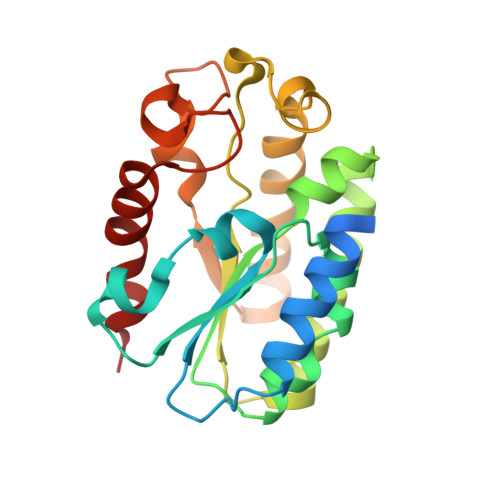The structure of Phocaeicola vulgatus sialic acid acetylesterase.
Scott, H., Davies, G.J., Armstrong, Z.(2022) Acta Crystallogr D Struct Biol 78: 647-657
- PubMed: 35503212
- DOI: https://doi.org/10.1107/S2059798322003357
- Primary Citation of Related Structures:
7PZG, 7PZH - PubMed Abstract:
Sialic acids terminate many N- and O-glycans and are widely distributed on cell surfaces. There are a diverse range of enzymes which interact with these sugars throughout the tree of life. They can act as receptors for influenza and specific betacoronaviruses in viral binding and their cleavage is important in virion release. Sialic acids are also exploited by both commensal and pathogenic bacteria for nutrient acquisition. A common modification of sialic acid is 9-O-acetylation, which can limit the action of sialidases. Some bacteria, including human endosymbionts, employ esterases to overcome this modification. However, few bacterial sialic acid 9-O-acetylesterases (9-O-SAEs) have been structurally characterized. Here, the crystal structure of a 9-O-SAE from Phocaeicola vulgatus (PvSAE) is reported. The structure of PvSAE was determined to resolutions of 1.44 and 2.06 Å using crystals from two different crystallization conditions. Structural characterization revealed PvSAE to be a dimer with an SGNH fold, named after the conserved sequence motif of this family, and a Ser-His-Asp catalytic triad. These structures also reveal flexibility in the most N-terminal α-helix, which provides a barrier to active-site accessibility. Biochemical assays also show that PvSAE deacetylates both mucin and the acetylated chromophore para-nitrophenyl acetate. This structural and biochemical characterization of PvSAE furthers the understanding of 9-O-SAEs and may aid in the discovery of small molecules targeting this class of enzyme.
Organizational Affiliation:
Department of Chemistry, University of York, Heslington, York YO10 5DD, United Kingdom.

















